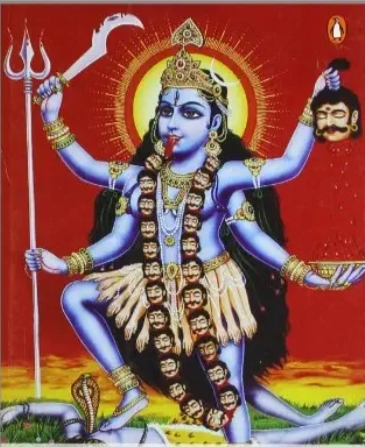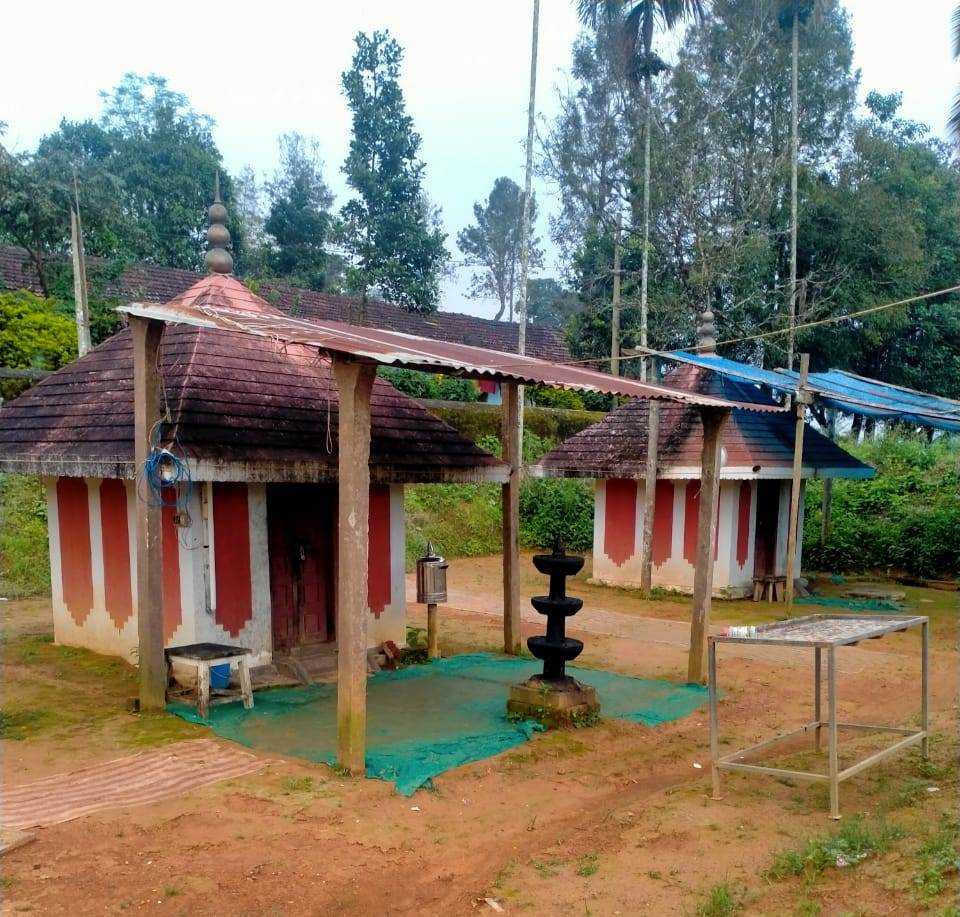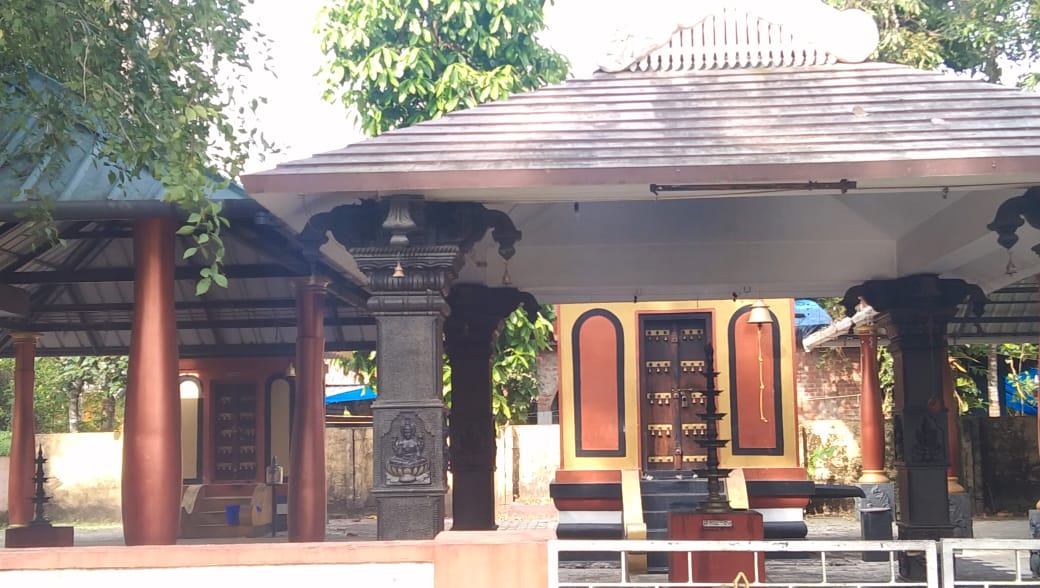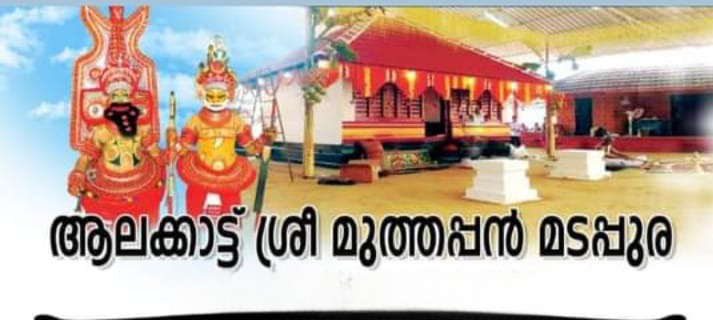Goddess Sree Bhadrakaali, who bestows her blessings on the human race and is a guiding light, resides and presides over at the holy Pachalloor Sree Bhadrakaali Temple, which is more than six centuries old. Pachallor is situated at 7 kms south of Trivandrum city.
The legend has it that even after the killing of the demon king ‘Daarikan’, the anger of Goddess Bhadrakaali did not subside. It would destroy the whole universe if it was allowed to fester. Hence the Gods got together and approached Lord Shiva, the creator of Goddess Bhadrakaali, to find a solution. Lord Shiva lied down in the path of the furious Goddess Bhadrakaali and on seeing her creator (father), the anger of the Goddess subsided.
Lord Shiva blessed Bhadrakaali and requested her to give Darshan to her devotees peacefully and harmoniously. As the legend says, the name “Pachalloor” was derived from “Paka chonnayoor” through the passage of time.
There are many myths about the origin of Sree Bhadrakaali Temple in Pachalloor. One of them says that the family head (Karanavar) of the famous “valiyavila” family inPachalloor happened to see two exhausted ladies taking rest under a huge banyan tree while traveling with a learned yogi. When asked, they came to know that the ladies were from Kodungalloor. The learned people of the afore said Tharavaadu (a matriarchal family), served tender coconut, bananas and fried maize on a banana leaf.
The head of the family on his return to the ‘Tharavaadu’, was astonished to see one of the sisters sitting at the place of worship of the family. The divine lady had disappeared the next day and the family found a glowing lamp filled with ghee in her place. The devotee of the ‘Valiavila Tharavaadu’ was given a divine sight regularly by the Devi (Goddess), and the house of the Devi was shaped to the form of Pachalloor Sree Bhadrakaali Temple.
The temple follows ancient Pooja rituals and the offerings given to the goddess now are the same as the old times. There is enough evidence to prove that the temple ofPachalloor existed well before the fourteenth century.
Vizhinjam, the then capital of the erstwhile kingdom of ‘Aai’ was incorporated into the kingdom of Venad during the fourteenth century. There were 64 ‘Shaiva Sankethams’ during those days and Pachalloor Sree Bhadrakaali Temple was the most important one among them.
The famous poet, Ayyi Pillai Asan, who lived around that time in Aavaadu Thura near Vizhinjam, wrote the ‘Ramakatha Paattu’. The Rama-Ravana war mentioned in theRamakatha Paattu was played in the form of ‘Villadichaan Paattu’ by the ‘Naattashaan’s’ during the festivals of this area.
There is a myth that the land was cursed by a Brahmin lady who was protected by the watchful eye of the Devi. Since the lady who gave ‘darshan’ to the family head of theValiyavila family came from Kodungalloor, Kannaki Charitham is sung as Bhadrakaali song (Bhadrakaali Paattu) during the festival times.
The people who throng to Pachalloor Sree Bhadrakaali Temple for centuries to take part in ‘Nercha Thookkam’ are devotees of Bhadrakaali. There is no division along caste and religious lines here. People from all religions participate in the ‘Nercha Thookkam’ on the same ‘bow’ (Thookka Villu). Even during the early days when class and caste divisions were deep rooted in the society, children from all castes and religions were safe in the hands of the ‘Devidaasar’ who would hang from the‘Thookkavillu’ which would go around the Temple.
Even centuries before the famous ‘Temple Entry Proclamation in 1937′, the fact that people from all cast and religions could enter the temple at the same time and participate in the ‘NerchaThookkam from the same ‘Thookka villu’ itself finds a place in history.
There are many unique features about the customs and pooja rites followed in this temple for years. The poojari (priest) is from the ‘Kolla’ community. The heavy rope for the ‘Nercha Thookka Villu’ comes from a family from the Ezhava community and the ‘Katcha’ comes from the ‘Mannar’ community. Carpenters from the ‘Aasari’community make the ‘Thookka villu’. The ‘Chanam’ is brought by a family from the ‘Araya’ community. The ‘Parikarmi’ are people from the ‘Thattaar’ community before whom ‘Panam’ (cash) is offered on the ‘Pallippalaka’ on the first day of festival. The drums (Chenda) accompanying Devi are played by people from ‘Paanar’ community and people mainly from the ‘Thandaar’ community are the Devidaasas.
When the human race distances itself by building boundaries in the name of caste and religion, people become members of one family in front of the ‘Boon-giver’Pachallooramma. They are devotees, children of Pachallooramma.
The main festival of Pachalloor Sri Bhadrakali Temple known as ‘NerchaThookka Mahotsavam’ starts on the auspicious day of ‘Makayiram’ in the malayalam month ‘Kumbham’ and the ‘Nerchathookkam’ falls on the succeeding ‘pooram’ day (seventh day). Devotees offer ‘thookam’ for getting blessed to have children and for the well being of the children. The devotees who do the offering, initiate the proceedings by donating money by putting the same on the ‘pallippalaka’ on the first day of the festival. The ‘Vratham’, starts from this day onwards for the devotees (Devidaasa) who go around the temple hanging from the ‘Thookka Villu’ on the seventh day. It is the starting of ‘Bhakthi’ and the principles of ‘Vritham’ (Penace).
The ‘Devi dasaas’ who stay in the temple do ‘namaskaaram’ around the temple twice a day to enhance the ‘Vrath’. On Pooram start, The ‘Devi dasaas’ go to the family house of pachallooramma, namely ‘Valiyavila’, get be-decked with flowers and garlands, come back to the temple where the goddess would preside from the ‘Pachapandal’, to receive her blessings.
A ‘Nercha Thookkam’ begins when a child, given by a devotee to the ‘devi dasan’ who hangs from the ‘Thookka villu’ tied firmly by ‘Kacha’, rise to the skies like a ‘Krishnapparunthu’, hanging from the ‘Villu’ spreading wings of ‘Bhakthi’.
A ‘Nercha thookkam’ ends when the ‘Villu’, which is drawn around the temple by devotees, completes a circle around the temple, carrying the child held dearly by the ‘Devi dasan’ close to his chest, Hung from ‘Nercha Villu’.
By the time the last child is taken around the temple in ‘Nercha villu’ and the goddess taken back as a procession inside the sanctum sanctorum, the sun would rise in the east ending a night filled with devotion and worship.
The devotees would leave the temple along with Devidasaas accompanied by the sounds of the drum beats of ‘chenda’ and other instruments, with a deep satisfaction that the future of their children are secure in the hands of ‘Pachallooramma’.
Ladies from far and near offer ‘Pongala’ to the ‘Devi’ on the eighth day. The festival draws to an end when ‘Kuruthi Tharppanam’ is done on the ninth day before the Goddess after conducting ‘Thatta Nivedyam’ and and ‘Kalankaaval’
തിരുവനന്തപുരം ജില്ലയിലെ പാച്ചല്ലൂരിലാണ് ക്ഷേത്രം സ്ഥിതി ചെയ്യുന്നത്ശ്രീ ഭദ്രകാളി ദേവിയാണ് ക്ഷേത്രത്തില പ്രധാന പ്രതിഷ്ഠ




No Events for next 2 days